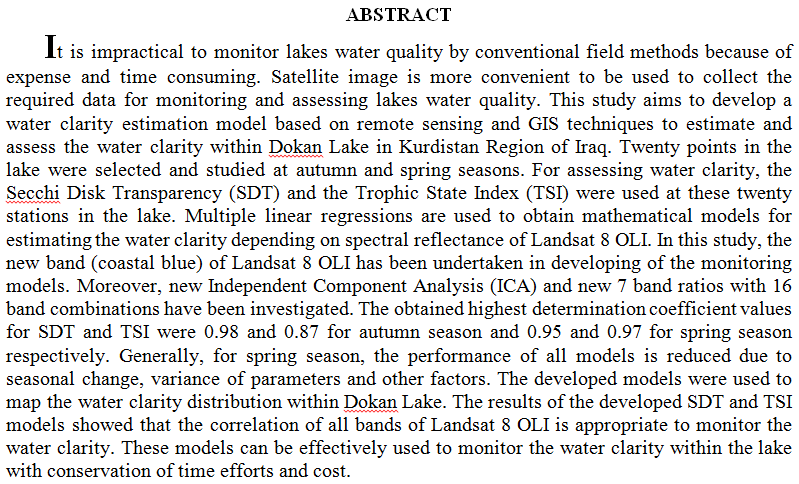
Abstract Background: This in-vitro study was to evaluated bitewing radiograph and tactile examination for detection secondary caries adjacent to amalgam restorations. Material and method: Sixty primary extracted molars with class I and class II amalgam restorations were selected from children, and examined by bitewing radiographs were taken by using film holders and interpreted on a backlit screen without magnification. Then, we used tactile examination with blunt probe. Result: The result of this study showed that the best cut-off points for the sample were found by a Receiver Operator Characteristic (ROC) analysis, and the area under the ROC curve and the sensitivity, specificity and accuracy of the techniques were calculated for enamel (
... Show MoreWhile many educators are highly focused on state test, it is important to consider that
over the course of a year, instructors can build in many opportunities to assess how learners
are learning. Therefore, assessment techniques are considered a good method to get benefit
for both instructors and learners in the process of teaching and learning. The sample consists
of 27 learners who participated in TOEFL training course in the Development and Continuous
Education Centre. Validity and reliability were verified.
To fulfill the aims and verify the hypothesis which reads as follows” It is hypothesized
that the TOEFL learners' scores will not be increased after TOEFL course training.” T-test
for two dependent samp
Groundwater quality investigation has been carried out in the western part of Iraq (west longitude '40°40). The physicochemical analyses of 64 groundwater samples collected from seven aquifers were used in the determination of groundwater characterization and assessment. The concept of spatial hydrochemical bi-model was prepared for quantitative and qualitative interpretation. Hydrogeochemical data referred that the groundwater is of meteoric origin and has processes responsible for observed brackishness. The geochemical facies of the groundwater reveal that none of the anions and cations pairs exceed 50% and there are practically mixtures of multi-water types (such as Ca–Mg–Cl–HCO3 and Na+K–SO4–Cl water type) as do
... Show More (14)
(14)
 (7)
(7)
The Iraqi marshes are considered the most extensive wetland ecosystem in the Middle East and are located in the middle and lower basin of the Tigris and Euphrates Rivers which create a wetlands network and comprise some shallow freshwater lakes that seasonally swamped floodplains. Al-Hawizeh marsh is a major marsh located east of Tigris River south of Iraq. This study aims to assess water quality through water quality index (WQI) and predict Total Dissolved Solids (TDS) concentrations in Al-Hawizeh marsh based on artificial neural network (ANN). Results showed that the WQI was more than 300 for years 2013 and 2014 (Water is unsuitable for drinking) and decreased within the range 200-300 in years 2015 and 2016 (Very poor water). The develope
... Show MoreThe Iraqi marshes are considered the most extensive wetland ecosystem in the Middle East and are located in the middle and lower basin of the Tigris and Euphrates Rivers which create a wetlands network and comprise some shallow freshwater lakes that seasonally swamped floodplains. Al-Hawizeh marsh is a major marsh located east of Tigris River south of Iraq. This study aims to assess water quality through water quality index (WQI) and predict Total Dissolved Solids (TDS) concentrations in Al-Hawizeh marsh based on artificial neural network (ANN). Results showed that the WQI was more than 300 for years 2013 and 2014 (Water is unsuitable for drinking) and decreased within the range 200-300 in years 2015 and 2016 (Very poor water). The
... Show MoreA new technique in cultivation by installing membrane sheet below the crop’s root zone was helped to save irrigation water in the root zone, less farm losses, increasing the field water use efficiency and water productivity. In this paper, the membrane sheet was installed below the root zone of zucchini during the summer growing season 2017 in open field. This research was carried out in a private field in Babil governorate at Sadat Al Hindiya Township reached 72 km from Baghdad. Surface trickle irrigation system was used for irrigation process. Two treatment plots were used, treatment plot T1 using membrane sheet and treatment plot T2 without using the membrane sheet. The applied irrigation water, time of
... Show More (3)
(3)
The multimetric Phytoplankton Index of Biological Integrity (P-IBI) was applied throughout Rostov on Don city (Russia) on 8 Locations in Don River from April – October 2019. The P-IBI is composed from seven metrics: Species Richness Index (SRI), Density of Phytoplankton and total biomass of phytoplankton and Relative Abundance (RA) for blue-green Algae, Green Algae, Bacillariophyceae and Euglenaphyceae Algae. The average P-IBI values fell within the range of (45.09-52.4). Therefore, water throughout the entire study area was characterized by the equally "poor" quality. Negative points of anthropogenic impact detected at the stations are: Above the city of Rostov-on-Don (1 km, higher duct Aksai) was 38.57 i
... Show More (9)
(9)
 (3)
(3)
Total dissolved solids are at the top of the parameters list of water quality that requires investigations for planning and management, especially for irrigation and drinking purposes. If the quality of water is sufficiently predictable, then appropriate management is possible. In the current study, Multiple Linear Regression (MLR) and Artificial Neural Network (ANN) models were used as indicators of water quality and for the prediction of Total Dissolved Solids (TDS) along the Tigris River, in Baghdad city. To build these models five water parameters were selected from the intakes of four water treatment plants on the Tigris River, for the period between 2013 and 2017. The selected water parameters were Total Dissolved Solids (TDS
... Show More (1)
(1)
